By Lawrence Haywood, Mar 15, 2025
In 1999, UNESCO officially recognized the town of Hoi An as a World Heritage site. It was the layers of gradually accrued history that brought them here, and a culmination of the food culture, architecture, and beautiful atmosphere of the ancient port town that helped Vietnam receive its third UNESCO designation.
Since then, tourism has markedly increased in Hoi An and now it is one of the must-see destinations in the country. With all of its various things to do in and around the town, along with the strong appeal of sitting down and taking it all in from a coffee stand on the pavement, it can be quite difficult to know how long to spend in Hoi An.
The town certainly has a unique atmosphere that demands proper appreciation over the course of a few days, but how long overall? In Hoi An, time has a more languid pace, as the ancient roots of the city stand frozen, laying out for all to see in its architecture and historical attractions. With this in mind, Incredible Asia Journeys is here to take a look at how many days you should commit to Hoi An.
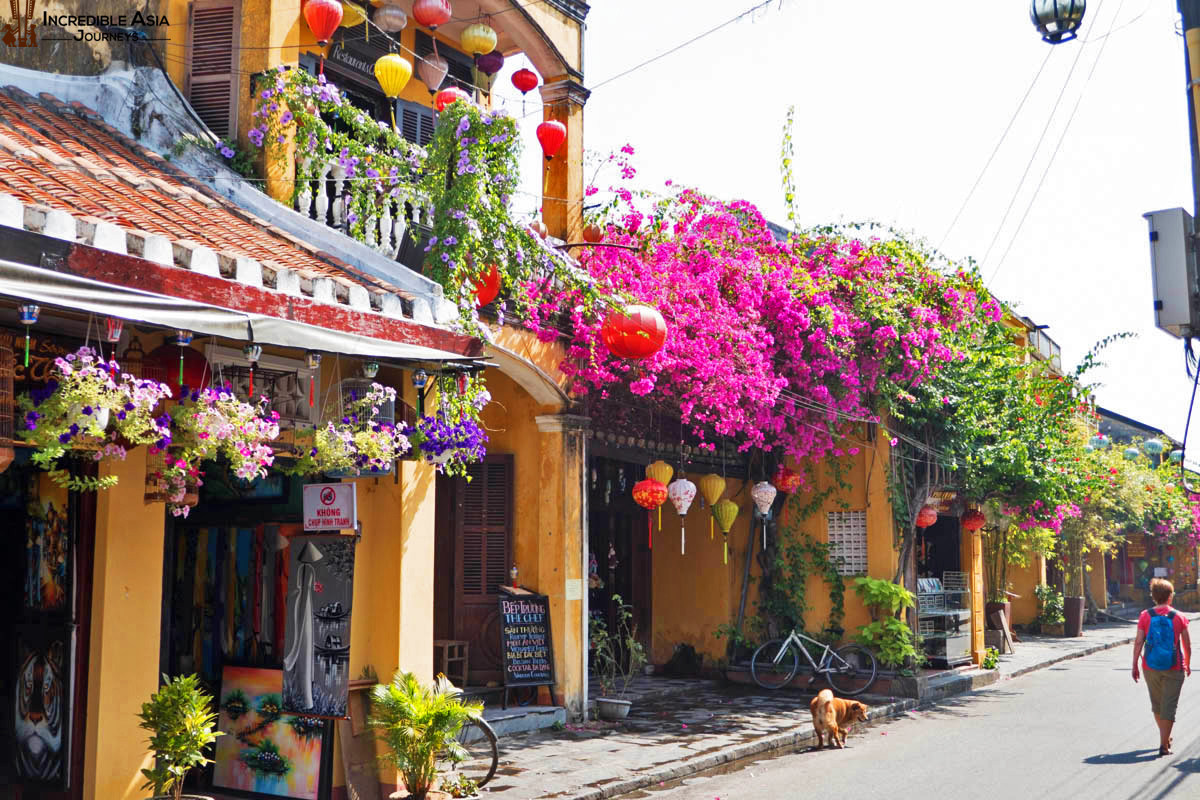
Hoi An Ancient Town
To get a full feel for Hoi An’s time requirements, we will need to look at some of the various attractions that keep the influx of tourists sufficiently high.
• Architecture – The tiled roofs that sit atop timber frame buildings and walls of rain-stripped yellow plaster are the iconic image of Hoi An. The influences from Chinese, Japanese, Western, and other cultures can be seen throughout the town in its residential houses, shops, markets and tailors, while entire Chinese structures exist in the form of exceptionally well-preserved assembly halls used for meeting and worshipping.
• Shopping – It’s no secret that Hoi An is a shopper’s paradise now; not for any large mega malls capitalising on tourist money, but for traditional items such as clothes, art and leather, handmade and sold within the town. The tailors are definitely one of the biggest draws for people looking for a bargain, and their preparation times will affect how long you eventually stay in Hoi An.
• Cooking and Eating – A visit to Hoi An isn’t complete without trying many of the culinary delights to be found here. Cao lau and mi quang are two of the most popular dishes, both inspired in some way, as most of Hoi an is, by outside influences in Asia and Europe. Cooking classes can reveal some of the hushed secrets of Hoi An’s food, explaining from start to finish the preparation, cooking and even eating techniques employed by the chefs of the town.
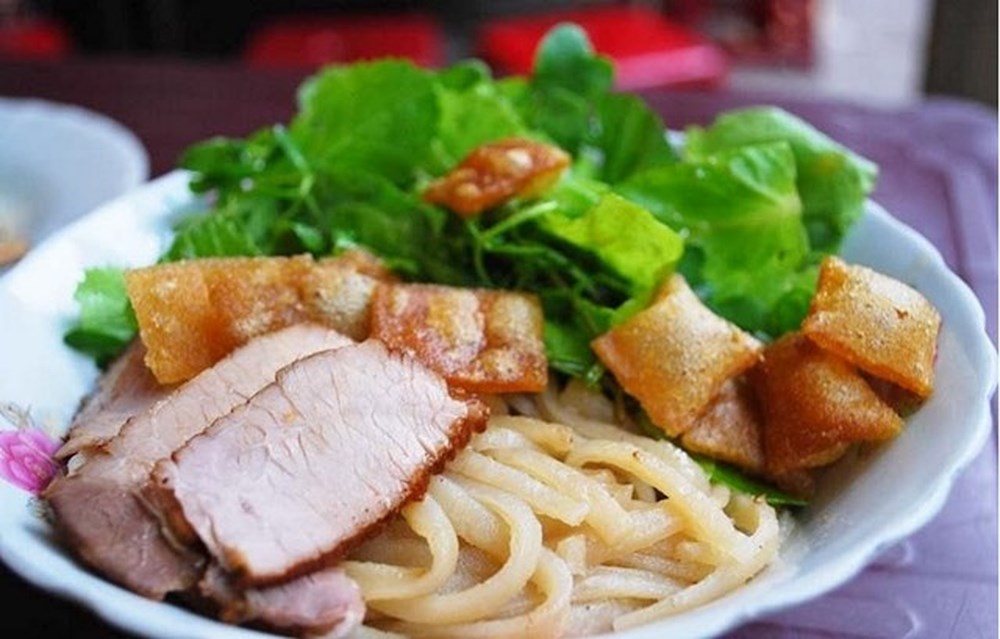
Cao Lau Hoi An
• History – Over 400 years of history saw Hoi An rise from uninspiring backwater to one of the most prolific port towns in the world’s most populated continent. Hoi An’s remarkable rise, and eventual fall brought about by French colonialists deciding that Da Nang was the future of modern trading, can be seen throughout the town. Its return descent back into ‘backwater’ status can be read on the walls of charmingly disheveled buildings, standing this way for 200 years, now containing a new breath of life as gorgeous tourist attractions.
• Nature - Hoi An is generally a very flat land, which creates the perfect conditions for jade rice paddies, farms, orchards, and quaint village paths that run between them all. Aside from farming villages like Tra Que and Cam Thanh, visitors can see a lush coconut forest in Bay Mau, beautiful rocky outcrops at the Marble Mountains, stretching beaches that hug the coast, and idyllic islands floating in the East Vietnam Sea.

1 day as a farmer in Hoi An
Depending on your interests in these fields, the question of how long to spend in Hoi An can have a 3, 4 or 5-day answer. Anything less than this will prevent visitors from getting the full Hoi An experience, or potentially, even half of it. Anything more than this is still encouraged, as an indefinite time can be spent among the hubbub of the town, watching tourists and locals mingle beneath lanterns, on boats down the Thu Bon River or in the groves of fruit trees dotting its picture-perfect suburbs. Tourists coming to Hoi An to spend 3 or 4 days have been known to leave a month later, with a brand new appreciation for Vietnam as a whole and a strong local loyalty to Hoi An in particular.
While a 2-day visit is barely skimming the surface, and a day trip is, quite frankly a travesty, Hoi An in 3 days is really on the lowest end of the spectrum for how many days should be spent in Hoi An. Still, this leaves enough time to get a decent feel of the town and engage in it from a cultural, historical and modern-day shopping perspective. Here’s our suggested itinerary for Hoi An in 3 days.
Morning
Take it easy on the morning of your first day in Hoi An. Soak up some of the wonderful vibrations of this constantly switched on town by strolling through the centre. You will see lively food markets both inside grand halls and outside on the street, along with vendors carrying their wares over their shoulders, balanced by the equal weight of produce in their baskets. Get a coffee under the ubiquitous lanterns as they sway above the streets, casting dancing shadows below them, and watch the sauntering of other visitors, taking myriad photos of the most picturesque town in Vietnam.
After this, you will probably want to find something to eat. You could either join an afternoon cooking class for a real, in-depth look at central Vietnamese cuisine, or you could dive straight into the diverse smorgasbord of culinary excellence to be found in Hoi An. Locate some cao lau, mi quang or com ga for a filling meal, or banh dap or hoanh thanh chien for a quick snack before you carry on your explorations.
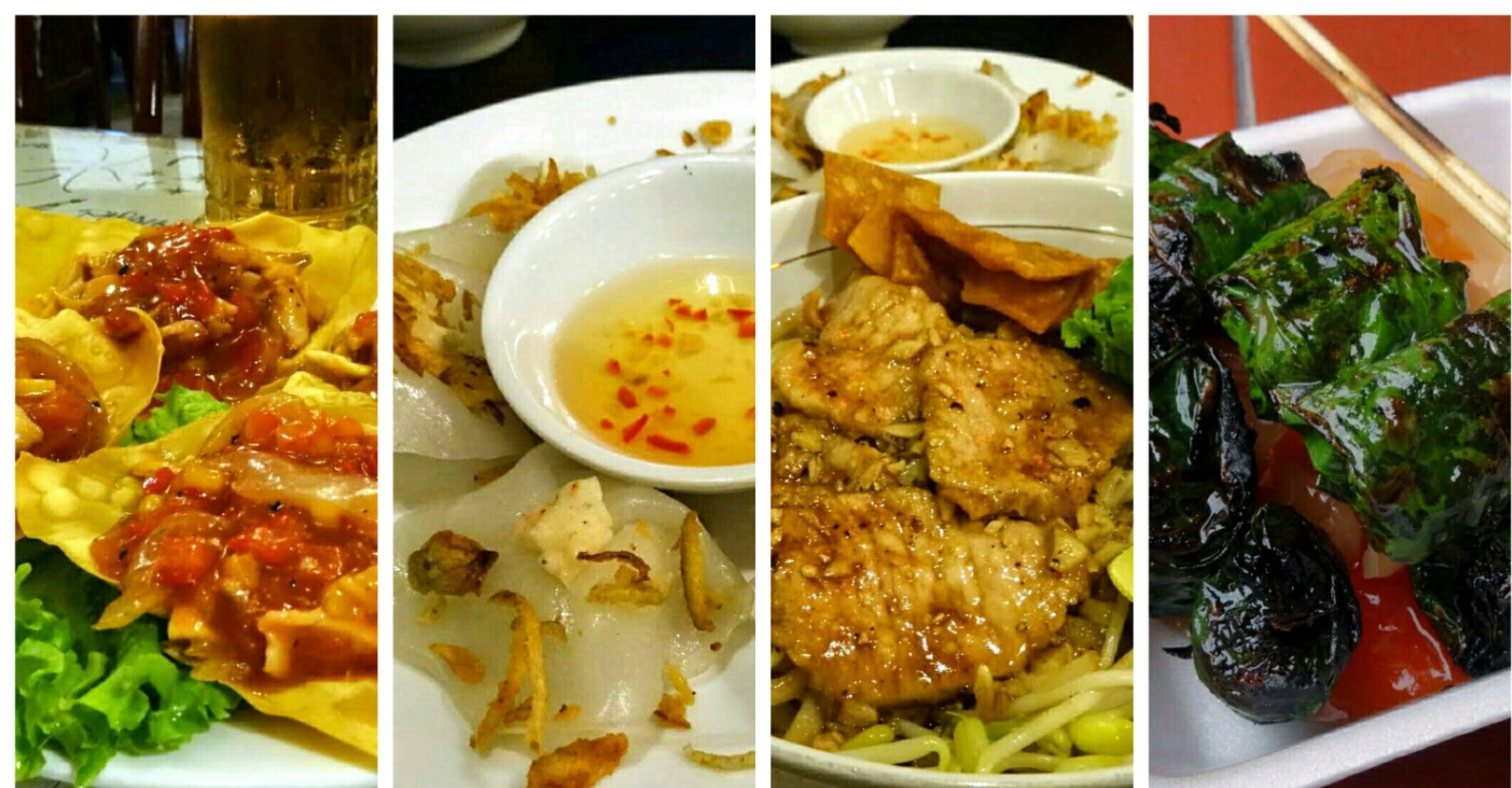
Hoi An Food
Afternoon and Evening
The tailors of Hoi An are famous worldwide for their highly dexterous skills. Simply show them a picture of something that you want created, choose your materials, wait patiently while you are being measured and come back within the next few days to pick up the finished item for a fraction of the price you would pay for the original and, often, with no easily-discernible differences in quality. Doing this early into your 3-day stay in Hoi An will give the tailors more time to get the finished product back to you, so spend the afternoon shopping around the beautiful tailor shops and speaking to artisans with generations of experience.
The evening of your first of 3 days in Hoi An should be spent around the thin passageways of the Thu Bon River. Lanterns line the flow of the river and many restaurants set up humble stools and tables along the side, providing a very romantic setting for dinner. Afterward, check out the night market, full of local crafts and artwork, or simply relax back at your hotel.
Morning
Rise early this morning to begin your day trips from Hoi An, head to My Son Sanctuary, the best-preserved relic of the Champa Civilisation, which ruled much of present-day central and southern Vietnam until eventual assimilation by Emperor Minh Mang of the Nguyen Dynasty in first part of the 19th century. While you could go on a self-guided tour, it is always suggested to go on a half-day tour with a guide, as information around the site is very scant. Your guide will explain many aspects of Champa culture and life, as well as the importance of My Son Sanctuary in the Cham people’s adherence to Hinduism.
Afternoon
After another delicious lunch, the half-way point of your 3 days in Hoi An should be spent around Hoi An’s Ancient Town. Buying your pass from any of the vendors around its perimeter will give you access to 5 of Hoi An’s 21 ancient attractions (3 for domestic visitors at a lower price) and an outlet for exploration throughout the afternoon. Spend time around any of the attractions that appeal to you, which may include the Chinese assembly halls, old residential houses, communal houses or museums. The Japanese Covered Bridge is the emblematic image of Hoi An and using 1 of your 5 tickets is worth it for a visit here.
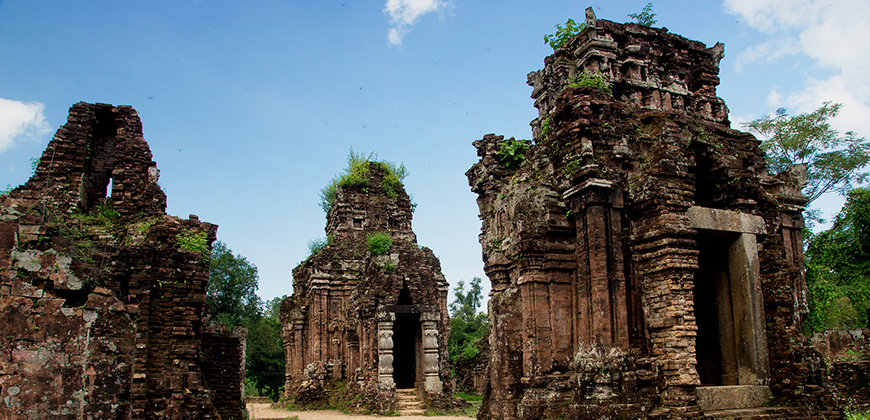
My Son Santuary
Morning
Begin the final leg of your Vietnam holiday package in Hoi An at the beach, catching the morning sun before the sometimes (usual) oppressive heat of the midday and early afternoon lays siege to the sands. Going early is also a great way to avoid the crowds, which tend to flood the beaches of An Bang and Cua Dai towards the late morning and mid-afternoon. You can find the same white sand, palm trees and invitingly blue water at ‘Hidden Beach’, north-west of Cua Dai, nicknamed for its lack of crowds and big company development.
Afternoon
End 3 days in Hoi An in its rural surrounds, having seen the main historical and cultural points of the town in the previous two days. Most of Hoi An’s satellite villages are very close to the town and can be reached within 10 minutes of cycling. Rent a bike from your hotel (many rent them for free) or in the town for a minimal cost and cycle out to the commune of Cam Thanh over quiet roads and bridges. On the eastern most point lies Bay Mau Coconut Forest, a stunning, forested expanse of nipa palm and mangrove, flanking the Thu Bon River to protect villages from flooding. You can jump into a coracle boat and go for a spin (literally, in some cases) along an estuary running off from the Cua Dai Harbour.
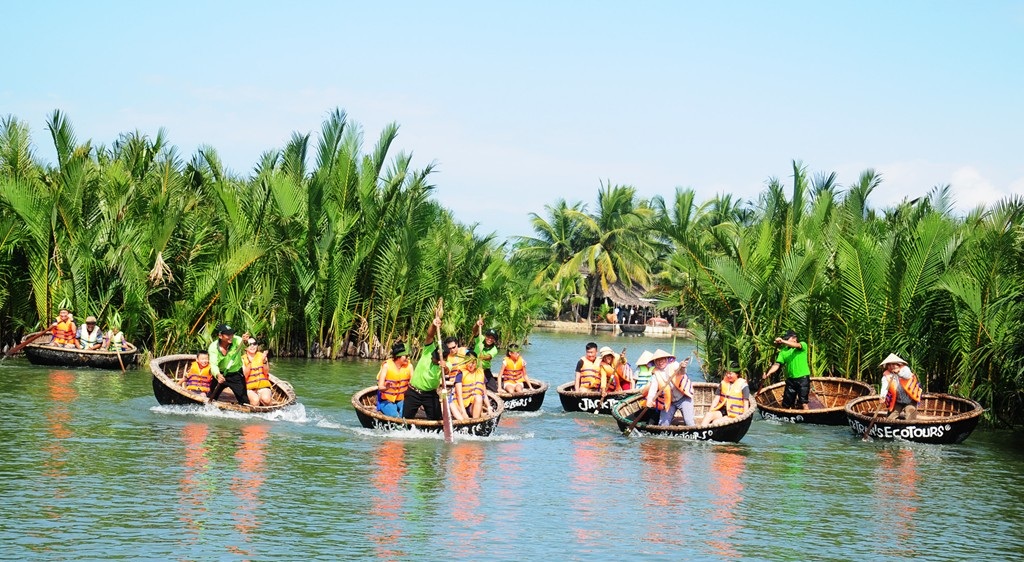
Bay Mau Coconut Forest
If 4 days are your answer to the eternal question of "how long to spend in Hoi An", you have a glorious chance to spend the extra day amidst the nature and religion around neighboring Da Nang.
Morning
Join a day tour that heads to Da Nang and enjoy the luxury of a guided tour of some of its natural features. You will stop on the way to Da Nang at the Marble Mountains, 5 outcrops of limestone rock rising suddenly from the distinctly flat ground around it. These are holy mountains for Buddhists and you can see many sites of worship through the caves of the ‘Water Mountain’, where many stone steps lead into and around shrines, temples, and statues. Continue onwards to the Son Tra Peninsula in the northwest corner of Da Nang’s coastal reaches, where Linh Ung Pagoda sits on a mountain thick with jungle. The 67m statue of the Lady Buddha, to whom the pagoda is dedicated, looks out over the most spectacular views of Da Nang City and the white sand beach that arcs from the base of the mountain into the distance.
Afternoon
After dining in the city, you should explore some of the highlights of the mechanised port town that put Hoi An out of trading business when the French arrived. These include Han Market, the central hub for Da Nang’s shopping scene, as well as the many bridges that cross the Han River, including the imposing Dragon Bridge, which shoots fire and water during festivals. Da Nang is also a great place to learn about the history of the ancient Champa Kingdom from the Cham Museum, taking visitors on a journey through the development of the Cham people’s culture and civilisation over the 1,800 years of their existence.
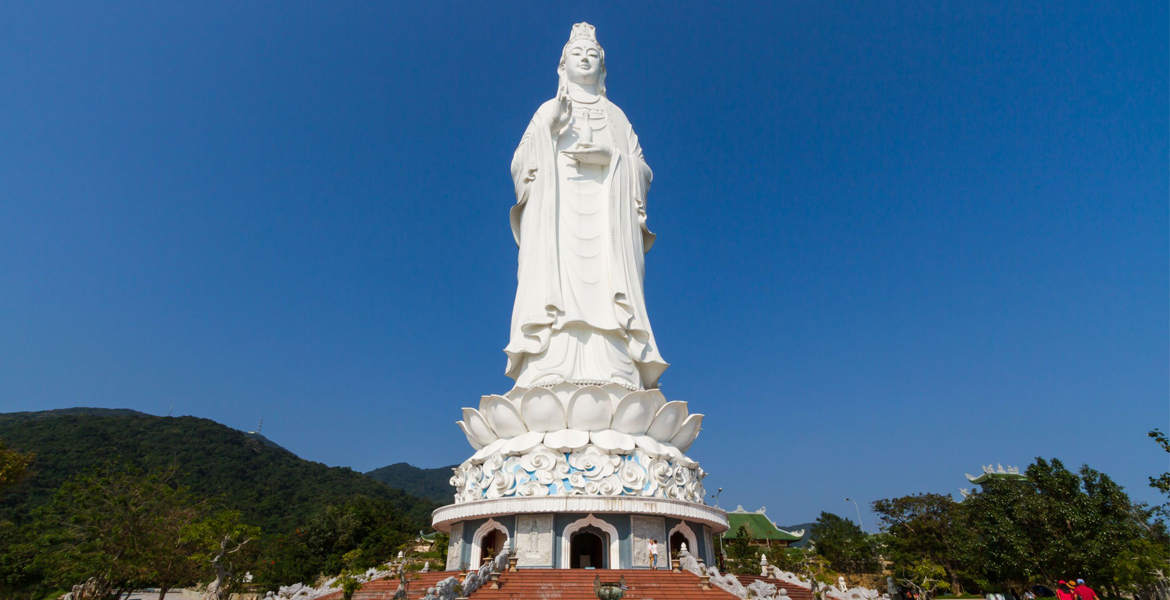
Linh Ung Pagoda on Son Tra Peninsula, Da Nang
5 days in Hoi An is a much more realistic way to see most places of interest. There is still quite a bit that can’t be accomplished in this time frame, but 5 days will accomplish a lot.
After 4 days in Hoi An filled with many best things to do in Hoi An, you will probably want to take some time out to relax. One of the undisputed places to do this is the Cham Islands, 18km off the eastern coast of Hoi An, a tropical paradise of palm trees, completely untouched beaches, coral-rich waters, humble guesthouses and religious relics belonging to the ancient Cham people who used to occupy this tiny archipelago. Joining a day tour to the islands is a good (and much easier) way to experience them, as you will go to several places that locals often keep quiet about. The more adventurous can try to arrive here by their own means, i.e., the sardine-packed ferry or less busy express boat that leaves from Cua Dai beach. This is a great option in the late afternoon and evening when day trippers leave and a wonderful calm falls over the islands. Of course, only do this if you plan to stay overnight in one of the guesthouses on the island.
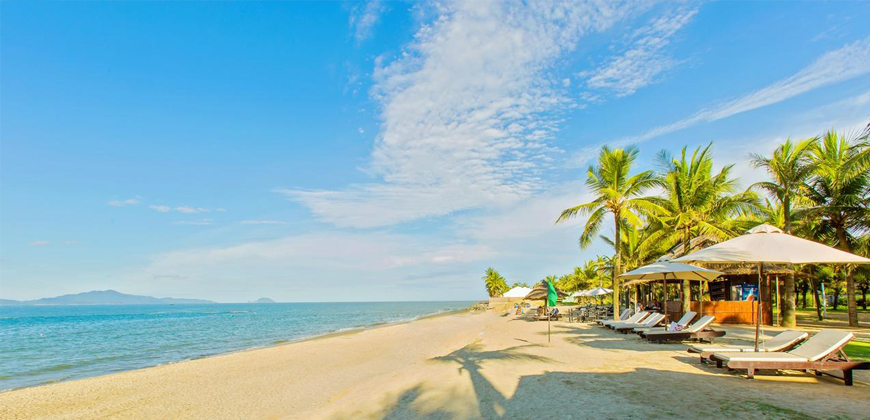
Cua Dai Beach
Depending on the season in which you arrive, how long you spend in Hoi An if affected deeply by the two seasons on offer here, the wet and the dry.
The dry season runs from about mid-March to mid-September. This generally means less rain and more sunshine, but temperatures also tend to be rather punishing. During this time, no matter how long you spend in Hoi An, you will be in largely pleasant weather throughout, but extra care should be spent if spending a lot of time outside in the mountains, on the beaches, or in the forested groves. Take sun cream and wear long, thin clothes for protection from the rays.
Running between mid-September and Mid-March, the wet season claims Hoi An for half of the year, unleashing torrents of rain upon it especially in the last three months of the year. The rain usually diminishes how many days you should spend in Hoi An, but it shouldn’t put you off completely. The atmosphere of the town is damp, but still defiantly kicking. More days can be spent inside in art galleries, village workshops, cooking classes and the various indoor attractions of the Ancient Town.
The most efficient way to get the most out of your 3-5 days in Hoi An is through private or group tours. These are with companies of vast experience in the region and the time management and language skills to make your time in Hoi An much, much easier. Here is a brief description of some of the tours we offer in and around Hoi An at Incredible Asia Journeys.
• Hoi An Half Day Agricultural Tour – Cycling to the commune of Cam Thanh and helping farmers in the paddy fields. Then catching fish at Phuoc Hai and cooking it up for lunch or dinner.
• Hoi An Rural Villages Half Day Cycling Tour - Cycling around the satellite villages of Hoi An, including Kim Bong, Tra Nhieu and Tra Que. Here we will discover some of the handicrafts of these villages, such as woodworking, mat weaving and vegetable farming.
• Hoi An Farming and Fishing Experience - Cycling to Tra Que, to assist local farmers in their work and heading to the Thu Bon River to cruise along it in a basket boat, catching fish and creating local works of art through handicrafts.
• Bho Hoong & Co Tu Village Full Day Tour – Meeting members of the hidden Co Tu tribe. Eating with them and learning of their unique and ancient culture.
• Hoi An - Da Nang Jeep Tour – Visiting Linh Ung Pagoda atop Son Tra Mountain. Heading to the Han Market and the Cham Museum, followed by the holy Marble Mountains.
• Hoi An Cooking Class – Self-picking food in an organic farm and heading to the market for the rest. Cooking up dishes with the help of an experienced chef before cruising back to Hoi An on the river.
• Hoi An Culinary River Cruise – Cruising along the waterways of Hoi An, enjoying a feast of food local to the region.
• Hoi An Eco Tour – Giving farmers a hand in their rice paddies and orchards, catching fish in the local river and having a short cooking class.
• Hoi An Kayaking with Floating Bar Tour – Taking a kayak down Hoi An’s river and reaching a floating bar for a romantic sunset drink or two.
• Hoi An Half Day Walking Tour – A guided tour of Hoi An’s Ancient Town to discover its history and culture.
• Mountains of Da Nang Day Trip from Hoi An – Checking out the Marble Mountains before we arrive at Son Tra Peninsula and take in the views. Heading to the Hai Van Pass afterwards to see the world’s most beautiful road from its peak.
• My Son Sanctuary by Jeep & Boat – Visiting My Son Sanctuary in the morning by Jeep and heading back to Hoi An along the river, with stops at Thanh Ha pottery village and Tra Nhieu fishing village along the way.
• My Son Sanctuary Half Day Tour – Exploring My Son Sanctuary with a guide and hearing more interesting facts about Cham culture at the Su Huynh Champa Culture Museum.